
No.55: EM Use as the National Policy of Thailand for Clean-up After the Massive Flood in 2011 (2)
Fortunate incidences lead to confirm the fact that beneficial aerobic and an-aerobic microbes can live together in the environment below pH3.5 and that a group of such microbes is applicable to all aspects of agriculture. Its effects to control insect damages, saline accumulation in greenhouse, and the problems caused by repeated planting in the same plot of land were confirmed in 1980.
Since 1982, with cooperation of International Nature Farming Research Center, EM application started among the farmers who follow Nature Farming method. EM was called "Saion" or "Iryoku" in those days. When its effects were presented at IFOAM Organic World Congress in USA in 1986, the name was changed to "EM (Effective Microorganisms".
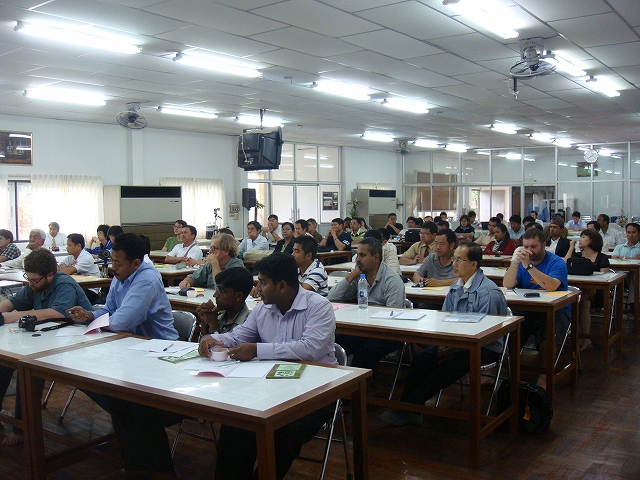
自然農法アジア人材育成センター研修室での国際セミナー
In science including agriculture, the term that is usually used is "beneficial" and not "effective". Therefore, BM was suggested rather than EM. However, beneficial means "beneficial for human" and includes "beneficial microorganisms used as a bacterial weapon".
In contrast, "effective" means "effective for human and nature and not harmful" and is a clearly separate idea from "beneficial". Some countries recognize EM as potable for human and animal health. In Japan, many people drink EM for health and controlling internal radiation knowing that it is sold as a soil improvement agent.

EM活性液作り
Therefore, EM is registered as a commercial trade mark and widely used by organic farmers in Japan and in the world. It is the most widely used microbial material in the world in the primary industries and environment.
In September of 1986, Mr. Kazuo Wakugami who was active in promoting welfare programs as the head of Thai Chapter of the Church of World Messianity, visited me at the University of the Ryukyus where I had served as a professor and requested my permission to use EM for organic farming in Thailand.
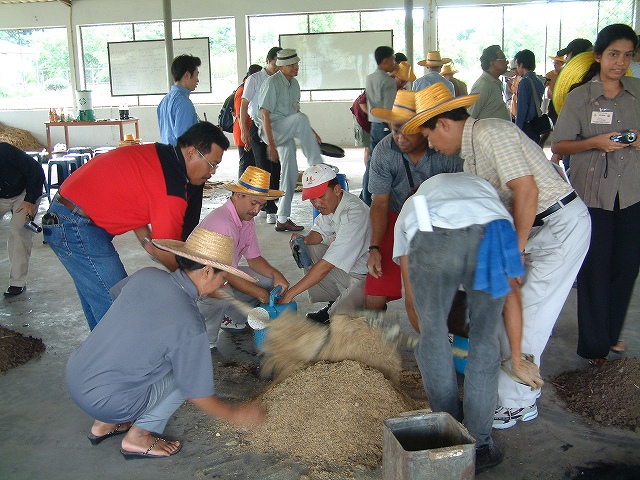
EMボカシ作り
Since Mr. Wakugami was born and raised in Okinawa prefecture where I live, I was willing to assist him. Furthermore, Thailand was very cooperative for horticulture farmers of Okinawa prefecture when orchids and tropical plants were introduced to Japan. Being a professor of horticulture science then, I was simply happy to learn that the technology that I have developed was going to be used in Thailand. Consequently in October, a month after Mr. Wakugami's visit with me, EM application for organic farming was introduced as the main theme at the Organic Farming Conference of Thailand held by Dept of Land Development of the Ministry of Agriculture and Cooperatives. With Mr. Wakugami's earnest help, EM application in Thailand began.
In those days, the northeastern part of Thailand had been suffering from long time draught, and rural villages were in destitute in spite of national effort to lead them to self-sufficient living. The most of the effort was designated as the King's project for which the Second Army was in charge. Many Japanese high rank officials visited Thailand and promised support, but none had been materialized according to Thai officials.
I learned from the General Sanaan who later became the Minister of Defense that since the Second Armey is involved in the projects, no support is available under the Japanese law that forbids providing support to a foreign force. In response to his complaint that Japanese officials made the promises that they could not keep, I and Mr. Wakugami made a counter offer that a system with cooperation of the Army to use EM for the farmers be established to make the northeastern Thailand self-sufficient.
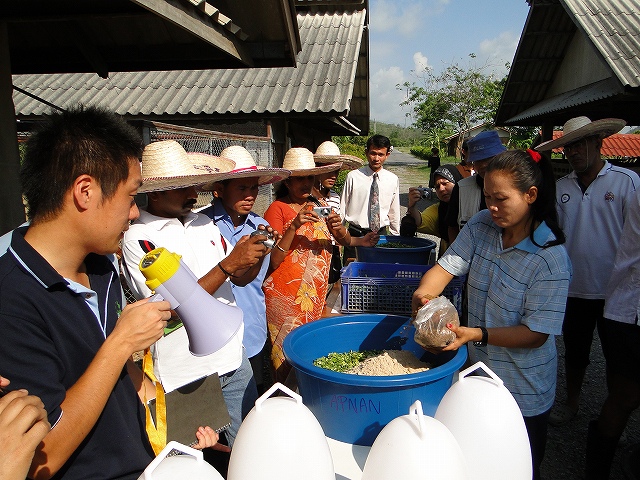
EMボカシによる生ごみ処理法
A training center and a model farm are needed to educate leaders to promote a wide use of EM. I pledged that I will raise \10 million to construct the Center for Nature Farming as well as to provide a small amount of grant (\300,000) to Thai research agencies and to work with interested farmers to demonstrate EM effect, and that I will continue my effort for more than 5 years.
With Mr. Wakugami's firm commitment, the Center for Human Resource Development in Asia Natural Farming was built in Saraburi. Higher ranking officials of the Army attended the opening ceremony, and the program started with active participation by the concerned government offices of Thailand. I visited Thailand 6 times per year to conduct special training sessions to educate leaders at my expense.
Everything was moving smoothly until Japanese Society of Soil Science and Plant Nutrition of which opinion was controlled by The University of Tokyo, issued a comment that EM was not effective. The comment was issued in exchange of \5 million given to the Society from an organization that wanted to kill EM and started EM bashing campaign. The Ministry of Agriculture, Forestry, and Fishery (MAFF) of Japan unfortunately agreed with the Society, which was to be known in Thailand. The universities and agricultural businesses in Thailand went along with EM bashing campaign.
Although MAFF later worked to recover EM credibility, the Society of Soil Science and Plant Nutrition never retracted the comment nor apologized, but it accepts papers on EM, which proves that they have no manners and are very insensitive.
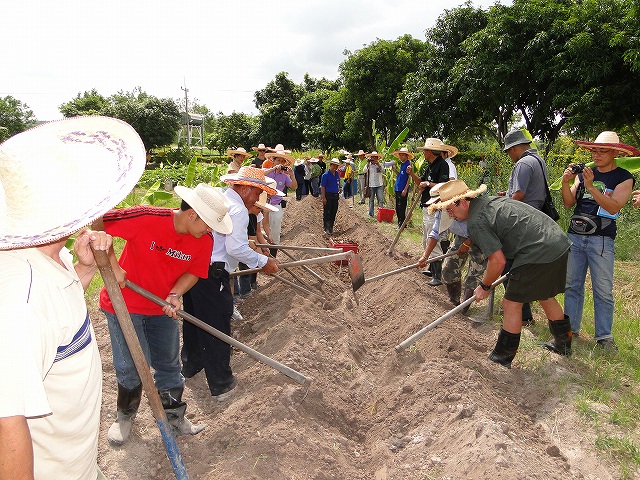
EM処理、生ごみ等による土壌改良
EM bashing campaign in Japan lasted for several years. However, EM use in Thailand proved to be very successful and expanded rapidly. The Army and the Ministry of Social Development and Human Security set up EM training centers in order to control drug transaction and poverty, especially to control poverty among Islam and prevent terrorism in the southern part of Thailand. Over 10,000 persons per year and more than a million persons to date have received EM training on agriculture, environment, and education in Thailand, which is highly evaluated by the United Nations.
In the history of Japan-Thailand relationship, Nagamasa Yamada is well known, but Mr. Kazuo Wakugami is the greatest contributor. Laying the foundation for future development, he saved Thailand. He is a model Japanese in the history of international contribution./p>
The main theme of this article series is to build a happy nation by using EM. I have introduced many cases to prove EM effect in the Northeastern Japan Earthquake and radiation problems caused by the nuclear power plant in Fukushima. Lately, more results of effective radiation control by EM have been published and recognized.
All EM information available in Japan is also made available in Thailand including EM manual for emergency and disaster situation. Consequently, EM use has been adopted as part of national policy in Thailand, and now is spreading to Vietnam, Laos, Cambodia, Malaysia, Indonesia, India, and East Timor.
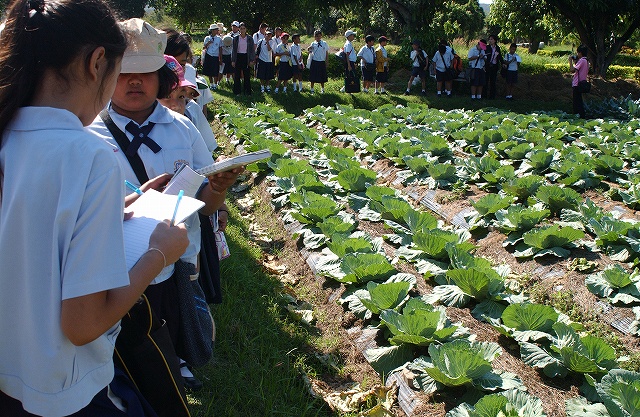
EMを活用し、無農薬で育ったキャベツ
記事一覧へ
| 